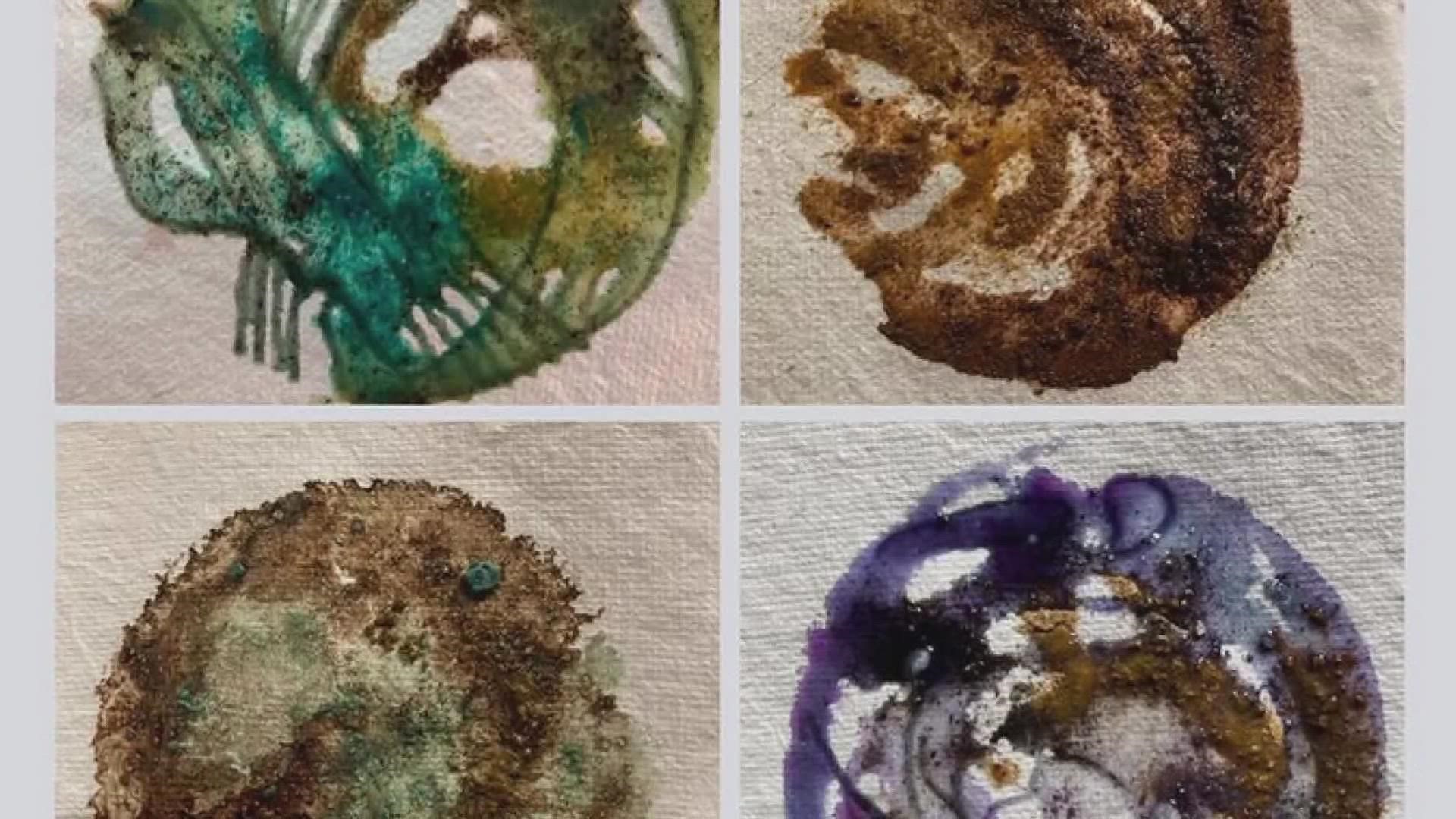MAINE, Maine — A University of Maine professor and artist is creating art with the belief that the medium a work is painted in can have a powerful message of its own.
Susan Smith is an associate research professor of art & graduate coordinator. Her exhibit, "Radical Gardening," focuses on pollution toxic chemicals known as PFAS and is now reaching a new audience outside of Maine.
Over the past seven years, Smith started using soil and plant materials to lessen the impact on the environment.
"I hand-make color from the soil, including pigments, paints, and dyes," Smith said.
She lives in Piscataquis County. Smith later discovered the very samples she had gathered near her home could be contaminated with forever chemicals known as PFAS. Nearby farmland was identified as a possible location where industrial sludge, laced with the chemicals, was spread as fertilizer.
"So, I decided to start a huge research project in all my waking hours to find out all the known documented sites," Smith said.
This past spring, using different resources, including a PFAS contamination site tracker from Northeastern University, Smith traveled to 48 different sites of PFAS contamination from Maine all the way to Texas. She collected soil, water, and plant materials. The artist started with areas identified as having some of the highest levels of chemicals in the state.
"The former site of the Tozier dairy farm, Fairfield, Howe Road in Fairfield as well, Benton that whole area of central Maine," Smith added.
Utilizing a field kit, Smith took soil samples from former military bases in Limestone and Brunswick — and water samples from the Pease Tradeport in Portsmouth, New Hampshire where firefighting foam seeped into the city's water supply. Smith created pigments, paints, and dyes and made botanical prints, textile pieces, and paintings.
"Everything you are looking at has some degree of contamination to it," Smith said.
The artist turned her creations into a mobile art lab.
Radical Gardening showcases art pieces, materials, photos from different sites, and fabric colored with PFAS-contaminated dye. Vials of the pulverized soil from PFAS sites are also on display. Smith also created casts from plant materials from a superfund site outside of a state.
"Some of the colors are beautiful natural earth tones, and to some degree, they all contain forever chemicals," Smith said.
On Tuesday and Wednesday, Radical Gardening will be the centerpiece of a symposium at the annual Urban Soils Symposium in New York City.
"I am excited to be the rural component of this symposium," Smith said.
Smith plans to add more PFAS-tainted art to the display. She hopes to continue to take the mobile lab on the road throughout the country. It's a sobering reminder within the fragile beauty of art and expression of how far-reaching PFAS contamination really is.
For more information about Smith's mobile art lab, click here. For resources and information on Maine's Department of Environmental Protection's ongoing investigation into the presence of PFAS in soil and groundwater at licensed sludge/septic land application sites, click here.
For information on possible health impacts from PFAS exposure from the Agency for Toxic Substances and Disease Registry, click here.

